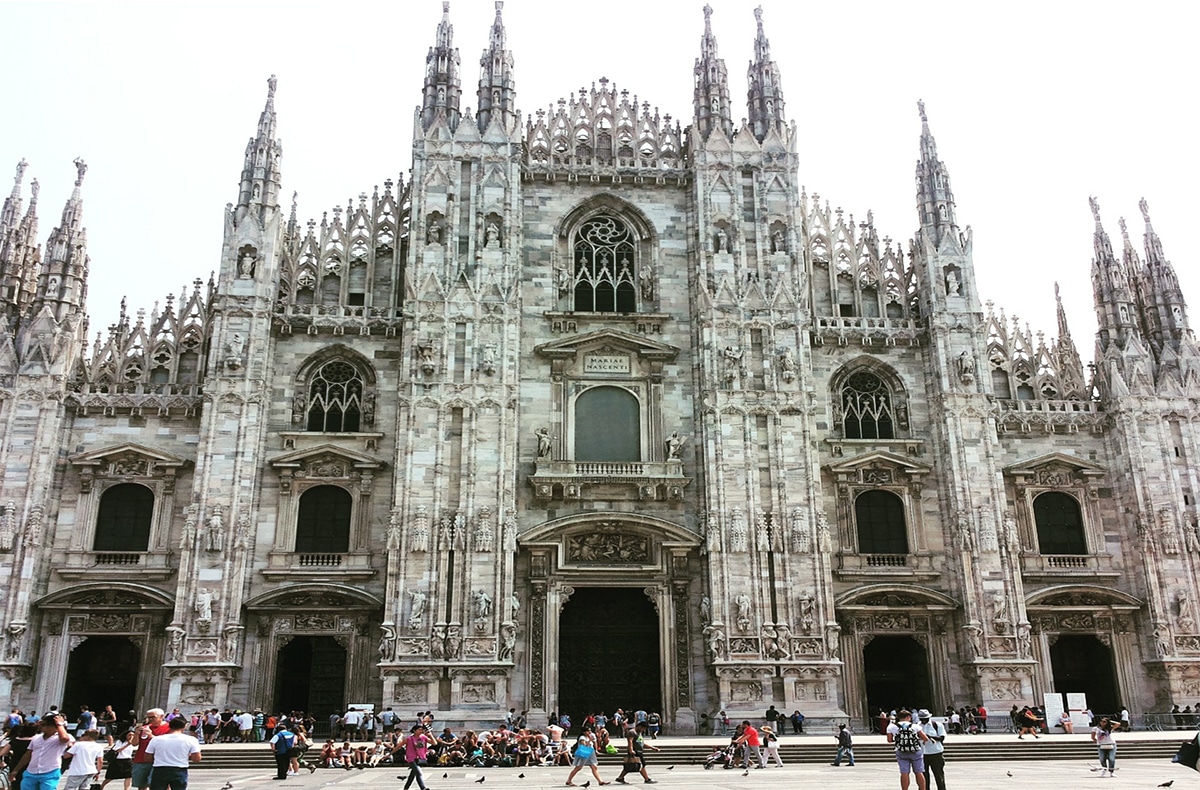
It is very common that, when making a trip, one of the most notable points of interest is a cathedral. As good tourists, the most normal thing is to go to visit it. But do you really know what a cathedral is? How important is it? Or how is it different from a church?
If you are not sure, I recommend you take a look at this article. We will explain what is a cathedral, what is it used for and how is it different from a church and other Christian buildings.
What is a cathedral and what is it for?

Let's start by explaining what a cathedral is. It is basically a Christian temple that it stands out for containing the chair or seat of the bishop of the corresponding diocese. Therefore, it could be said that it is the main church, or at least the most important in that area. From there, the bishop presides over the entire Christian community of that region by teaching the doctrine of the Catholic Church and the faith. He is also in charge of administering orders and certain sacraments. Thus, the chair or see is a symbol of the function of government that the bishop performs. It should be noted that the Orthodox Christian Church normally calls cathedrals "great church".
As for the use that is given to these buildings, it is obviously everything related to religious ceremonies. However, today the cathedrals They are also used to carry out other tasks, such as teaching studies, especially Latin, theology and grammar. In fact, this is how cathedral studies or schools originated. Through the teachings that were given in the cathedrals, the first regulated studies were formed. Later, this process evolved little by little until the universities that we know today emerged.
History
Now that we know what a cathedral is, we will comment a little on its history. These buildings arose as new constructions or as an evolution of a monastic church whose status had been raised to that of the seat of the bishop. The main factors that determined which churches could claim the title of cathedral were demographic issues, missionary activities and ecclesiastical power. As these new buildings appeared, different Christian territories, known as dioceses, were suppressed or merged.
It should be noted that, initially, the bishop's seat churches did not have any special typology. In fact, during the first centuries of the Middle Ages and of Christianity, which would be the fourth to eleventh centuries approximately, cathedrals were not very different from other centers of religious worship, such as temples dedicated to martyrs or monastic churches. It was later, in the XNUMXth century, when cathedrals began to acquire dimensions and certain configurations that made them stand out from other religious buildings.
During the XNUMXth, XNUMXth, XNUMXth and part of the XNUMXth centuries, the construction of these buildings had its peak, as coincided with the appearance of art and Gothic architecture. During that time, the cathedrals not only continued to be the seat of the bishop, which is the main characteristic that defines them, but they also acquired various connotations in which both the prestige and the image of the cities in which they lived played a fundamental role. they were built And that is how they became Christian temples to be monumental and grandiose buildings. Even today, cathedrals are still associated with the Gothic style.
After that time of magnificence when it came to building cathedrals, there were a number of factors, such as the Protestant Reformation, which stopped this eagerness to build such grandiose buildings. From then on, the cathedrals gradually moderated their magnificence and size. However, they continued to be very imposing buildings, but adapted to the changes in artistic styles and tastes of each era.
What is the difference between a church and a cathedral?

It is very common to confuse some concepts such as church, cathedral or basilica. Although it is true that all three are part of the Christian churches, there are certain differences that we must know, the most notable being the importance of these buildings. First of all let's clarify the term “church”. It generally refers to a congregation made up of faithful Christians. Buildings dedicated to divine worship are also called this way. whose differences reside especially in their importance.
As we mentioned earlier, the cathedral is the church or temple where the chair or seat of the bishop is located. We can find these buildings all over the world and their architectural forms and dimensions are very varied. The oldest cathedrals that we know of date back to the origin of the Christian religion. However, very original and modern Christian temples are still being built today.
Without a doubt, the cathedral is one of the most important constructions of Christianity, but the basilica is no slouch either. What is this? How is it different from a cathedral? Let's see: The basilicas, although they are considered churches, They are built before Christianity appeared. These are very striking and large buildings that are mainly used to transmit religion.

Initially they were used by the Romans and by the Greeks as a court. However, since the fourth century, which is when Christianity emerged, they are churches that have obtained the honorary title of basilica granted by the Pope himself. To be considered a featured church, they must meet at least one of these particular criteria or events:
- Have a high architectural value.
- Contain important and unique heirlooms.
- Being a pilgrimage destination for many faithful.
I hope that now it has become clear to you not only what a basilica is, but above all what a cathedral is and what distinguishes it from other Christian buildings. Surely you have already seen some or at least heard of them, such as the famous cathedral of Our Lady from Paris.